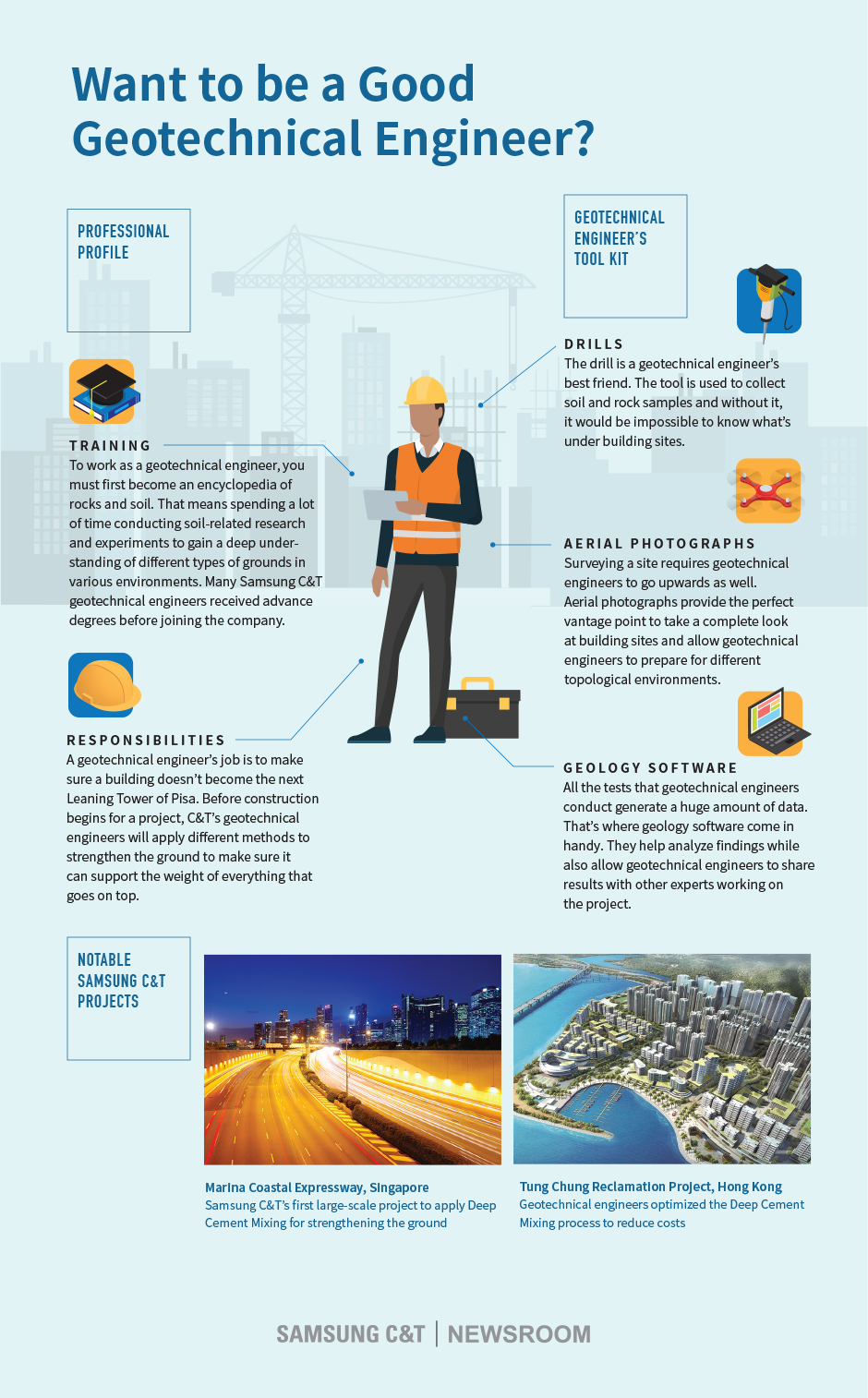The Main Principles Of Geotheta
The Main Principles Of Geotheta
Blog Article
The Best Strategy To Use For Geotheta
Table of ContentsGeotheta for BeginnersGeotheta for DummiesAn Unbiased View of GeothetaThe Definitive Guide to Geotheta
They collaborate with civil engineers, structural designers, engineers, and other professionals to incorporate geotechnical considerations right into the general job style and construction process. This requires efficient teamwork, control, and interaction to ensure that the geotechnical aspects align with the job purposes and fulfill regulative requirements.Mining & Products Engineering: Concepts of exploration, penetration prices, and variables impacting the option of exploration method. Features of nitroglycerins, shooting systems and blast patterns. Blowing up methods in surface and underground functions. Special blasting methods at excavation perimeters. Resonance and sound control. Mechanical and continual approaches to fragmentation, including longwall shearing and fullface boring.
Modelling of piece and particle dimension circulations; comminution as a transfer feature. Comminution innovation: squashing, grinding, size classification. Integrated analysis of fragmentation and comminution operations. Supplied by: Mining & Products Design.
The Only Guide to Geotheta
Bachelor's level programs in civil, geotechnical, geological, and ecological engineering commonly last 4 years and consist of basic education and learning courses in English, social science, and the humanities, in addition to programs in advanced maths, architectural geology, and fluid mineralogy. (https://forums.hostsearch.com/member.php?265240-geotheta)
Geotechnical design involves the analysis of the dirt and rock conditions at a particular site, and their effects for the growth of that website. As the majority of structures count on the ground for assistance, it lacks shock that a detailed understanding of the ground conditions, and the viability of structure systems, are crucial to the long-term security and performance of the structure or structure.
Specialising in the examination of geological developments and ground behaviour, geotechnical engineers carry out scientific investigations and testing to understand the effect these geological formations may carry the style and building and construction of building, civil and facilities tasks. This expertise is vital for the design and building and construction of buildings, roads, tunnels, dams, bridges, and water system and sewer system.
The geotechnical group at Douglas Partners routinely speak with engineers, style engineers, designers, and home builders to make referrals on style and advancement proposals to make certain that the developed frameworks are accordingly designed for the ground problems. The style of footing systems requires to consider the weight of the structure, the capacity of the ground to support that weight with each other with activity tolerances and reliable building.
Getting The Geotheta To Work
This task is considerably simplified by the use our Douglas Map geospatial system that makes this info conveniently accessible in a simple to make use of internet internet browser user interface. A geotechnical engineer will direct the drilling of boreholes and test pits to collect soil and other examples, and additionally assess surface features and ground direct exposures to create a geotechnical version of the subsurface conditions.
Relying on the project kind and ground problems ran into, research laboratory screening may amongst various other points examine stamina, compressibility, sensitivity and/or permeability of dirt and rock samples. Hereafter information is gathered and collated, the results are utilized for a geotechnical design of the site, which is normally presented as sections across the site.

A geotechnical examination naturally can just assess the ground problems at the areas pierced or excavated. All-natural variations in dirt and rock problems can take place across a site and between examination areas. It is as a result great practice that the geotechnical designer be retained throughout building of the project to supply on-site verification that the ground problems experienced are constant with the expectations and advice provided in the geotechnical investigation record.
An Unbiased View of Geotheta
Geotechnical engineers use their comprehensive understanding of dirt and rock to assess risk and address issues on diverse infrastructure projectsGeotechnical engineering is a specialist branch of civil design which considers the behaviour of planet products and the application of soil and rock mechanics. Tailings Engineer. As a geotechnical engineer, you will certainly evaluate the physical, mechanical and chemical properties of soil and rock in order to make foundations, retaining structures and earthworks
Geotechnical engineering is closely connected to and overlaps with, both design geology and ground design - https://giphy.com/channel/geotheta. It's feasible to be experts in geotechnics or benefit a geotechnical company but be referred to as a design geologist or a ground designer. As a geotechnical engineer, you'll require to: construct and maintain relationships with clients and other experts included in the site, throughout each projectmaintain safety requirements on website be mindful of price implications when you make recommendationsstudy geological maps and aerial photographs from a variety of sources and from various time periodsexamine building and construction plans to see exactly how practical they are based on your understanding of the siteinvestigate dangers or geological dangers for the sitesearch for environmentally delicate features, such as landfill beginning to create accurate and expository ground modelsplan field investigationsdrill and evaluate examples of bedrock, dirt, groundwater and added products monitor other specialists on sitesolve technological issues as they occur, such as unforeseen frameworks at drill sitesmonitor problems during and after building to make certain frameworks are secure in the short and long termadding information collected on website to your preliminary researchcreating geotechnical computations, illustrations, and 2 or three-dimensional computer models analyzing the datamaking referrals regarding the suggested usage of the site

Report this page